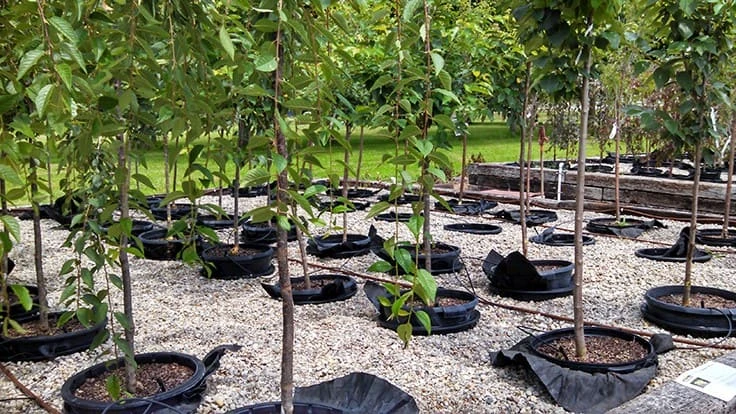
No matter what type of irrigation system you use, growers should strive to know their application uniformity. It's important because it helps not only conserve water, but to improve plant quality by keeping plants from being over or underwatered.
Uniformity is affected by nozzle selection, spacing and height, water pressure, pipe size and maintenance of the system. Distribution uniformity (DU), measured in percentage, is an easy method of checking and provides a visual picture of how the water is being applied.
The irrigation industry has developed the following DU ratings. Greater than 90% = excellent, 80–90% = good, 70–80% = fair and less than 70% = poor.
The DU method for drip systems consists of sampling the output from a number of emitters. Depending on the application and manufacturer, emitters can have outputs from ½ to 16 gallons/hour (gph). Collection containers should be sized to collect 1 minute of system operation. In one minute, a 1 gph emitter will put out about 1/8 pint (60 ml) whereas a 16 gph emitter will put out about 1 quart.
Three or four sampling locations should be chosen for each lateral line in the zone, one near each end and one or two evenly spaced in the center. Place a container under each emitter. Turn the irrigation system on for one minute then turn it off.
Prepare a data sheet to record the amount of water from each emitter. Use a graduated cylinder or beaker to measure the amount.
Next rank the emitters in order of how much water they put out. Now add up and record the output for the lowest 25 percent. Divide this by the number of emitters. To calculate the DU divide this number by the average rate for all the emmitters and multiply by 100. Refer to the industry DU ratings above to see how your system compares.
To calculate the amount of water in gph that is put out by any emitter or by the average, multiply the milliliter reading by 0.0159. For example, 60 ml/min x 0.0159 = 0.95 gph.
If the DU rating is fair or poor, clean and check filters/screens, nozzles or emitters that have the lowest output.
With the system in operation, check pump pressure with in-line gauges against the pressure at the beginning and end of lateral lines. Low pressure at the ends may indicate leaks, too small supply pipes or too many nozzles/emitters. Water supply should be limited to about 4 gallons per minute (gpm) for ½” pipe, 8 gpm for ¾” and 12 gpm for 1” pipe to keep friction loss at an acceptable level.
You may need to add new nozzles, replace worn nozzles or change to closer spacing to get greater uniformity of overhead systems.
More uniform watering results in more uniformity in plugs, seedlings and mature plants. Checking your system will help to see where changes should be made.
Latest from Nursery Management
- John Ruter shares UGA's latest woody and herbaceous ornamental plant breeding projects
- Conor Foy joins EHR's national sales team
- Pantone announces its 2026 Color of the Year
- Syngenta granted federal registration for Trefinti nematicide/fungicide in ornamental market
- Get to know Kayela Aeppli
- HILA 2025 video highlights: John Gaydos of Proven Winners
- Q&A with Justin Bartlett
- Be the best choice





